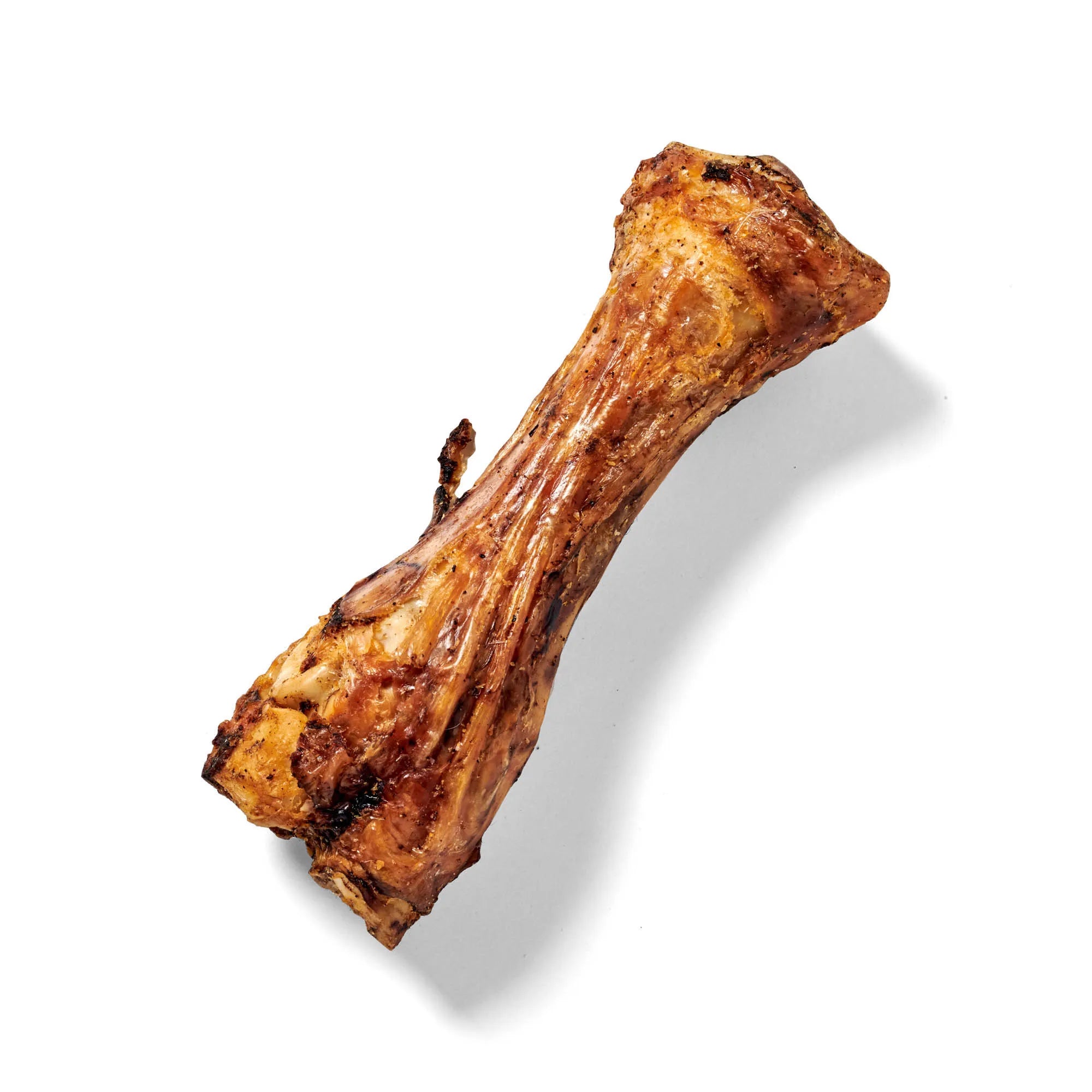
Behavioral problems in dogs
Share
Behavioral problems in dogs are a phenomenon that many dog owners know only too well. From the temperamental terrier that barks at everything and everyone to the shy German shepherd that hides from every loud noise - the range of undesirable behaviors is wide. These behavior problems can significantly disrupt the harmonious coexistence between humans and animals and therefore require special attention.
Content: Behavioral problems in dogs
- Causes of behavioral problems in dogs
- Common behavioral problems in dogs
- aggression
- Anxiety and phobias
- Separation anxiety
- Excessive barking
- Destructive behavior
- Uncleanliness and house soiling
- Diagnostics and professional help
- Prevention of behavioral problems
- Conclusion
The reasons for such behavior are as varied as the dogs themselves. Sometimes it is due to genetic predisposition, other times to a lack of early socialization in the early development phase. Traumatic experiences or health problems can also be triggers. The exciting journey to solving these problems begins with a deeper understanding of the causes and the knowledge of how to specifically address them. This way, living together becomes harmonious and fulfilling for both sides.
Treat your dog to something special with our chew products!
Causes of behavioral problems in dogs
The causes of behavioral problems in dogs are varied and range from genetic predispositions to health problems. It is important to understand these causes in order to take the right measures to correct the problems.
Genetic predisposition
Some behavioral problems in dogs can be traced back to genetic predispositions. Certain dog breeds are naturally inclined to specific behaviors. For example, terriers are known to be very energetic and sometimes aggressive towards other animals, while herding dogs such as Border Collies often have a strong need for exercise and mental stimulation. These genetic predispositions can lead to behavioral problems if the dogs' needs are not adequately met.
Lack of socialization and education
Socialization is a critical factor in the development of any dog. A dog that is not adequately socialized in the first few months of life may become fearful or aggressive toward people, other dogs, and new situations. Socialization means that the dog has positive experiences with different people, places, sounds, and other animals. Inadequate training, where the dog does not learn clear boundaries and rules, can also lead to behavior problems. Dogs need consistent and loving guidance to understand what behavior is acceptable.
Traumatic experiences and abuse
Dogs that have had traumatic experiences or have been mistreated often show behavioral problems. These dogs can be fearful, aggressive or extremely skittish. Traumatic experiences can be varied, from physical abuse to neglect to extreme stress situations. Such dogs need a lot of patience and special training methods to gain trust and overcome their fears.
Health problems and pain
Physical health and behavior are closely linked. Pain or health problems can cause behavioral changes in dogs. A dog that suddenly becomes aggressive could be in pain, and a dog that seems unusually fearful or withdrawn could be suffering from an illness. So if you suspect that health problems are behind your dog's behavior, it's important to consult a veterinarian to rule out or treat any medical causes.
Common behavioral problems in dogs
There are a variety of behavioral problems that can occur in dogs, ranging from aggression and fearfulness to excessive barking and destructive behavior. Each of these problems has specific causes and requires different approaches to solving them.
aggression
Aggression is one of the most serious behavioral problems in dogs and can take many forms. From growling and barking to biting, aggression in dogs can be dangerous and requires careful analysis and treatment.
Causes and triggers
The causes of aggression can be varied. Genetic factors play a role, but the dog's experiences and upbringing are also crucial. A poorly socialized dog or a dog that has had traumatic experiences is more likely to be aggressive. Health problems such as thyroid disorders or pain can also trigger aggression.
Prevention and intervention strategies
To prevent aggression, good socialization and training of puppies is crucial. Dogs should learn early on how to deal with different people and animals. When aggressive behavior occurs, it is important to identify and avoid the triggers. In severe cases, cooperation with a professional dog trainer or behavior therapist may be necessary. Medication can also be helpful in some cases.
Anxiety and phobias
Dogs, like people, can suffer from fears and phobias. Common fears in dogs include separation anxiety, noise phobias (such as fear of thunderstorms or fireworks ), and fear of unfamiliar people or places. Fearful dogs often show signs such as shaking , hiding, panting , or excessive licking . The causes of fearfulness can be due to a lack of socialization, negative experiences, or genetic predisposition.
Common phobias
The most common phobias in dogs include fear of noise, fear of unfamiliar people and places, and separation anxiety. Fear of noise often occurs during thunderstorms or fireworks. Dogs with a fear of unfamiliar people or places often show stress symptoms when they are on walks or in new environments. Separation anxiety manifests itself in extreme stress when the dog is left alone.
Treatment options and training techniques
Treating fears and phobias requires patience and gradual desensitization. Behavioral therapy and positive reinforcement are effective methods for calming anxious dogs . Relaxation techniques or wearing a Thundershirt can also help. In severe cases, the use of medication may be necessary in consultation with a veterinarian.
Separation anxiety
Separation anxiety occurs when a dog becomes overly stressed when left alone. Symptoms can include destructive behavior, excessive barking or howling, uncleanliness, and even self-harm. Separation anxiety is often the result of an overly strong attachment to the owner or traumatic experiences in the past.
Strategies for relief and treatment
To treat separation anxiety, it is important to teach the dog that being alone is not threatening. This can be achieved through gradual training and positive reinforcement. Leaving the house should be associated with positive experiences for the dog, such as giving treats or toys. In severe cases, working with a behavior therapist and using medication may be necessary.
Excessive barking
While barking is a natural way for dogs to communicate, excessive barking become a problem. Causes of excessive barking can be boredom, fear, territorial behavior, or attention seeking. Dogs that do not receive enough mental and physical stimulation often tend to bark more.
See also: Why do small dogs bark
Education and training to reduce barking
Reducing excessive barking requires patience and consistent training. Positive reinforcement and rewards for quiet behavior are effective methods. Distraction and activity can also help reduce barking. Training should aim to identify and avoid triggers for barking or gradually get the dog used to them.
Use of aids
In some cases, tools such as anti-bark collars or special training devices can be useful for controlling behavior problems in dogs. Anti-bark collars respond to the dog's barking with a harmless stimulus, such as a spray, tone or vibration, to signal the dog to stop barking. Special training devices such as clickers or distance control devices can be used to reinforce positive behaviors and correct undesirable behaviors.
Make your dog happy with our tasty chews!
Destructive behavior
Destructive behavior, such as chewing furniture or digging in gardens, is another common problem. This behavior can be caused by boredom, separation anxiety, or lack of physical and mental stimulation. Puppies and young dogs are particularly prone to destructive behavior as they explore their environment and test their teeth.
See also: How to stop puppies from biting
Possibilities for behavior correction
To correct destructive behavior, it is important to identify and address the underlying causes. Adequate physical and mental stimulation through walks, play, and training is crucial. Providing dog toys can also help satisfy the dog's need to chew.
Employment and stimulation as preventive measures
One of the best ways to prevent destructive behavior is to keep your dog busy and stimulated. Regular walks , interactive games, and training sessions can help burn off excess energy and mentally challenge your dog. Enrichment programs, where your dog has to solve tasks to get food, can also be very helpful.
Uncleanliness and house soiling
Another common problem is the House soiling , where the dog urinates or defecates in the house. This can have a variety of causes, from lack of training and insufficient opportunities to go for walks to health problems such as urinary tract infections or incontinence. Older dogs can also have difficulty controlling their bladder.
Reasons for uncleanliness in dogs
There are a number of reasons why dogs may be unclean, including lack of training, not enough opportunities to go for walks, and health problems such as urinary tract infections or incontinence. Older dogs may also have difficulty controlling their bladder. Stress and anxiety can also lead to house soiling.
Training methods to improve cleanliness
Improving toilet training in dogs requires patience and consistent training. Puppies should be taken outside regularly, especially after eating, drinking and sleeping. Positive reinforcement through praise and treats when the dog does its business outside is effective. For adult dogs, training can also be supported by regular walks and positive reinforcement.
Veterinary assessment for medical causes
If a dog suddenly becomes unclean or has difficulty controlling his bladder, a veterinarian should always be consulted to rule out or treat health problems. Diseases such as urinary tract infections, diabetes or kidney problems may be the cause and require medical treatment.
Diagnostics and professional help
In many cases, professional support is required to diagnose and treat behavioral problems in dogs. Veterinarians and behavior therapists play a central role in this.
When a veterinarian or behavior therapist should be called in
There are situations where professional help is needed to diagnose and treat behavioral problems in dogs. If behavioral problems persist or worsen despite efforts, a veterinarian or behavior therapist should be called. Signs such as sudden behavioral changes, extremely aggressive behavior, or severe anxiety are indicators that professional help is needed.
Methods for diagnosing behavioral problems
Diagnosing behavioral problems requires a thorough history and examination by a professional. The veterinarian will first rule out health causes before diagnosing behavioral problems. A behavior therapist will observe and evaluate the dog's behavior to identify triggers and causes. This can be done through interviews with the owners, observations, and sometimes video analysis.
Role of the veterinarian and the behavior therapist
The veterinarian plays an important role in identifying health problems that could lead to behavioral problems. Behavioral therapists, on the other hand, specialize in analyzing and treating behavioral problems. They develop individual training and therapy plans to support the dog and the owner. In many cases, cooperation between the veterinarian and the behavior therapist is the key to success.
Prevention of behavioral problems
Preventing behavioral problems is crucial to ensuring harmonious coexistence with dogs. Many problems can be avoided through early socialization and training.
Importance of early socialization and education
Good socialization and training in the first months of a dog's life are crucial for its development. Dogs should have positive experiences with different people, animals and environments early on. This helps them to become confident and well-adjusted adult dogs. Training should be consistent and loving so that the dog understands what behavior is desired.
Tips for raising puppies and young dogs
Raising puppies and young dogs requires patience and consistency. Important aspects include house training, learning basic commands and behavior on a leash. Positive reinforcement through praise and rewards is the most effective way to encourage desired behavior. Regular socialization and playful activities help to keep the dog mentally and physically stimulated.
Continuous activity and mental stimulation
Adult dogs also need ongoing exercise and mental stimulation to prevent behavioral problems. Regular walks, training sessions, and interactive games are important to keep the dog busy. Enrichment programs, in which the dog has to solve tasks to get food, can also help to mentally challenge and occupy the dog.
Conclusion
Behavioral problems in dogs may seem like insurmountable hurdles at first glance, but with the right knowledge and a bit of patience, these challenges can be overcome. From genetic predispositions to a lack of socialization to health problems - the causes are varied and require a targeted approach. Through early and consistent training, loving guidance and the willingness to deal with the individual needs of the dog, we can build a harmonious relationship with our four-legged friends.
The insights provided in this article are more than just theoretical knowledge - they are the key to a happier, more balanced dog life. By understanding our dogs' signals and responding appropriately, we can not only solve many behavioral problems, but also prevent them. Professional support from veterinarians and behavior therapists can be a valuable help, especially in complex cases.
At the end of the day, the journey to a better understanding of our dogs is a worthwhile one. It gives us the opportunity to build a deeper bond and enjoy a harmonious relationship. So, let's not let the challenges discourage us, but see them as an opportunity to get to know our four-legged companions even better and enable them to live a fulfilling life by our side. The effort we invest will be rewarded with priceless loyalty and unconditional love - a price that is worth every effort.
Make your dog happy with our delicious snacks!















